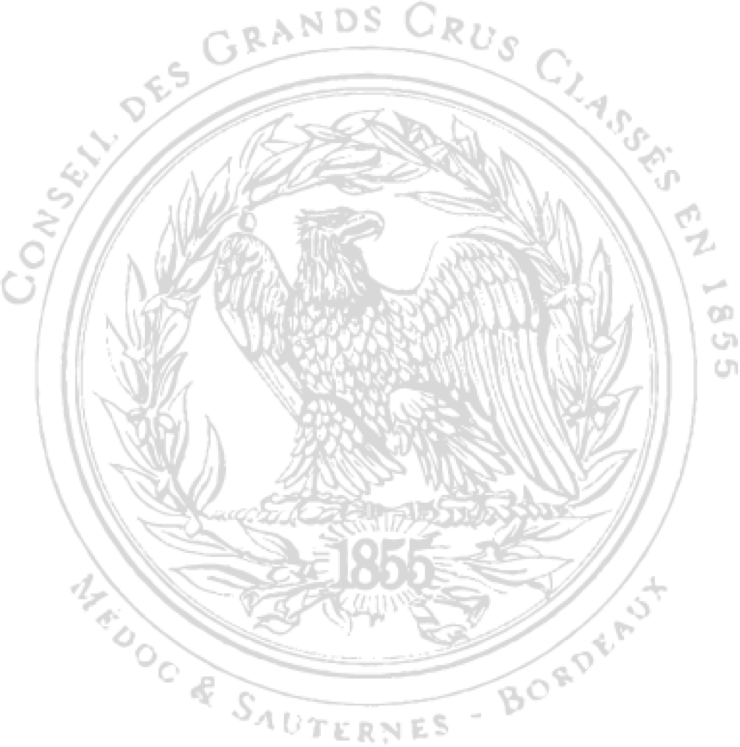An Exceptional terroir
BY CORNEL VAN LEEUWEN
Bordeaux Sciences Agro Bordeaux Professor

THE CLIMATE, THE GRAPE VARIETIES, THE SOIL
The 1855 grands crus classés owe their exceptional character in part to the efforts of the winemakers over the decades, but also largely to the exceptional qualities of the terroir. Terroir is a French word from the Latin territorium. Yet terroir means much more than just the soil in which the vine grows. It refers to all the characteristics of the vineyard that influence the finished wine, such as soil, climate, exposure to the sun, and so on. The terroir is the bond between the bottle of wine and the place that made it what it is.
Winemakers were aware of the influence the terroir could have on the quality of the wine as early as Roman times. In the Bordeaux region, the notion of the terroir was developed in the Middle Ages, when wines were named after the village where they were grown. Evidence survives to show that prices varied according to the village, suggesting that some villages had a reputation for producing better wine than others. Already we can see an as yet very primitive hierarchical classification emerging in the Bordeaux region. In the Middle Ages, however, judging the quality of wines was a far more hit-or-miss affair than today, because all of the wines from the same village were sold at roughly the same price, independent of their quality. It was not until the seventeenth century that the notion of individual estates began to emerge. In purely chronological terms, Château Haut-Brion was the first estate to sell its produce separately. As a result of this change, the notion of the terroir became much more clear-cut, as the place of origin of a wine would now be traced to within a few acres on an individual estate rather than the thousands of acres that a whole village’s vineyards might cover. Perhaps surprisingly, the English wine market played a decisive part in this development, as the English were prepared to pay high prices for excellent wines, and one way of guaranteeing consistent high quality was to identify the terroir.
The famous philosopher John Locke visited Bordeaux in 1677, and wrote an account of his travels in the region. This account is a valuable source of information on how contemporary winemakers understood the effects of the terroir on the wine. Locke’s voyage to the Bordeaux region was akin to a pilgrimage—so impressed was he by the quality of the Haut-Brion wines he had drunk in London that he decided to go and see the estate for himself. He noted that the owner of the estate explained that the superb quality of his wine was due to the porous, gravelly soil and good slopes, light composting, and old vine stocks. These are precisely the qualities recognized as producing the finest wines today. It is amazing to think that over three centuries ago, winemakers had already discovered this.
John Locke’s journey also illustrates the remarkable traceability of wines from the great terroirs, like the wines included in the 1855 classification. Whereas vins de marque—vintage wines—are blends of wines from various estates, a vin de terroir will always be made of grapes grown on one single estate. This is what gives it its principal characteristics and qualities, and it also means that wine lovers can visit the vineyard, admire the very vines that produced the grand cru classé, and talk to the winemaker who produced it. Nowadays, the issue of traceability has become vital in the food industry as a whole, but the 1855 classification recognized its importance a century and a half ago.
CONCLUSION
The terroir is a subtle harmony resulting from the effects of the soil, the weather, and the grape variety, skillfully combined by the winemaker. Other parts of the world share conditions and soil types similar to those found in the Bordeaux region. Cabernet Sauvignon grapes, which owe their reputation to the excellence of the 1855 crus classés, are now grown all over the world. But what makes the 1855 grands crus classés so unique is the remarkable harmony of the soil, the climate, and the grape varieties. Cabernet Sauvignon grapes are brought to perfect ripeness by the Bordeaux climate, as long as the soil is warm enough to hasten the process. The well-drained soils draw off the excess rainfall and prevent the vines from taking up too much water, building up sugar levels in the perfectly ripened grapes. But the terroir would be nothing without the expertise of the master winemaker. It is entirely due to the efforts of generations of skilled vintners that this southwestern corner of France has become one of the greatest winegrowing regions in the world.

